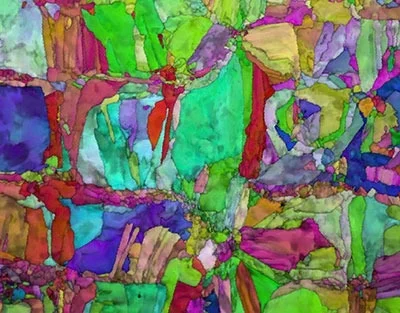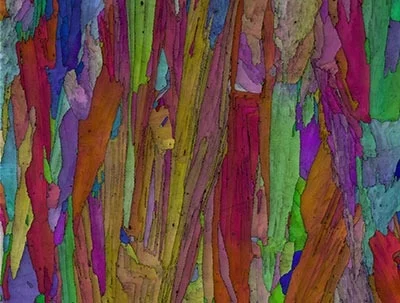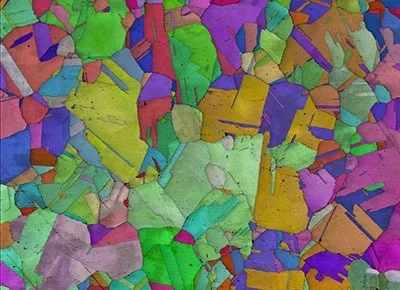EDAX offers the fastest EBSD mapping and optimal indexing performance on real-world materials with its Velocity™ EBSD Camera Series. Velocity, driven by a CMOS sensor, combines high sensitivity, low noise, and quick acquisition for the best possible data collection and quality.
There are four different models in the Velocity Camera Series:
- Velocity Ultra—Up to 6,700 indexed points per second (ipps)
- Velocity Super—Up to 4,500 ipps
- Velocity Plus—Up to 3,000 ipps
- Velocity Pro—Up to 2,000 ipps
These speeds can be reached for all models, and up to 99% indexing success rate can be provided. Without requiring specialized processing algorithms to accurately describe distorted microstructures, the proven triplet indexing routine of EDAX provides orientation accuracy values below 0.1°.

EBSD orientation map from additively manufactured 316 L was collected at 6,700 ipps with Velocity Ultra with a 99% indexing success rate. Image Credit: Gatan

EBSD orientation map from additively manufactured Inconel 718 was collected at 4,500 ipps with Velocity Super with a 99% indexing success rate. Image Credit: Gatan

EBSD orientation map from Inconel 600 was collected at 3,000 ipps with Velocity Plus with a 99% indexing success rate. Image Credit: Gatan

EBSD orientation map from deformed brass was collected at 2,000 ipps with Velocity Pro with a 99% indexing success rate. Image Credit: Gatan
The performance of the Velocity camera covers a wide range of materials, including multi-phase, reduced symmetry, and deformed structures. The Velocity Series makes it possible to efficiently collect data on these real-world samples and produce high-quality results for the best possible materials research.
Even at the fastest collection speeds, the Velocity EBSD Cameras can be used with reliable EDAX energy dispersive x-ray spectroscopy (EDS) detectors to create effective concurrent EDS–EBSD collection. This provides valuable integrated data for accurate phase distinction when used with ChI-Scan™ analysis.
Features and benefits
Data collection rates up to 6,700 ipps
Quickly compiles EBSD maps for 3D EBSD applications, in-situ investigations, and efficient SEM use.
Provides high sensitivity, low noise images for EBSD indexing at the highest speeds
Provides low noise, high sensitivity images for the fastest possible EBSD indexing.
Orientation precision less than 0.1°
Precise characterization of distorted microstructures using typical indexing algorithms.
High indexing success rates
EDAX’s triplet indexing and unique Confidence Index provide unparalleled indexing performance on challenging real-world samples.
High-speed simultaneous EDS–EBSD collection
Velocity EBSD cameras have been enhanced with reliable EDAX EDS detectors for excellent data collection at high speeds.
